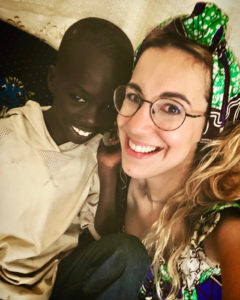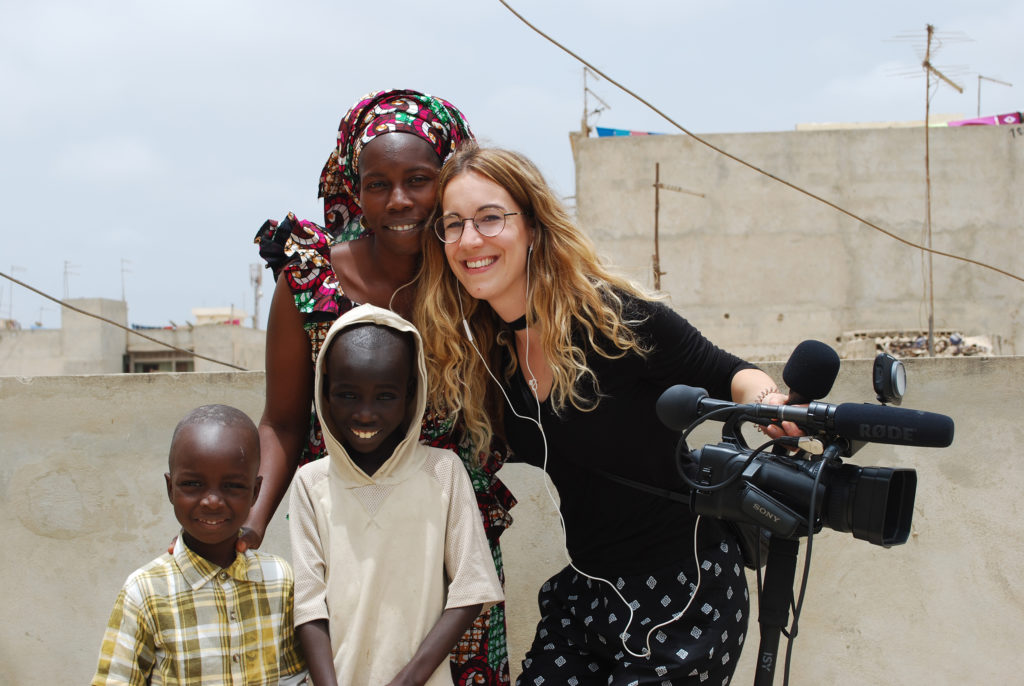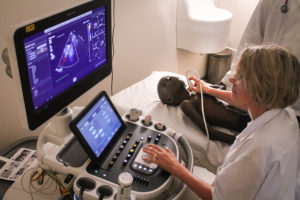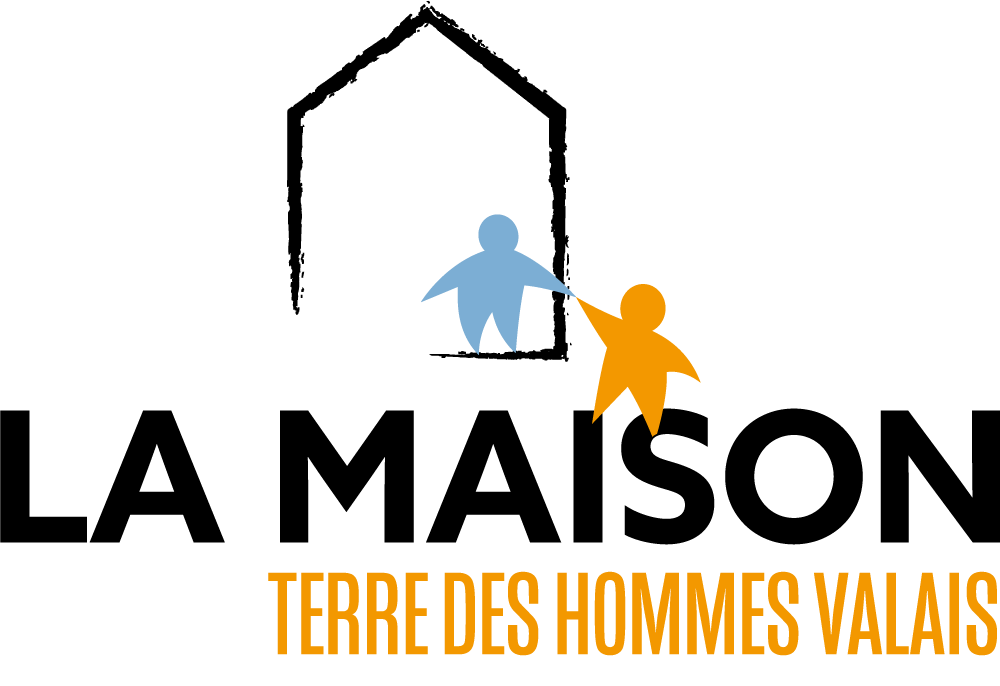A journalist from The Nouvelliste immersed in Senegal
written on the 01.09.2018A journalist, from the newspaper Le Nouvelliste, followed for three months Abdoulaye, a young Senegalese with a heart disease operated in Switzerland. The 11 year-old boy had to leave his family behind to be healed. Terre des hommes organised his care.
In May, Agathe Seppey travelled to Senegal as a journalist for the newspaper the Nouvelliste. Her aim: “Understand a reality under the condition of getting as close as possible”, she explains. During this mission, the journalist met humanitarian actors who make all the necessary efforts to allow children to receive medical care. The reporter discovered Terre des hommes and the CHUV’s actions in Dakar. She met Abdoulaye, a young Senegalese, 11 years old, suffering from a heart disease, waiting for his transfer to Switzerland. She followed him all along the way to recovery, and while he stayed at La Maison.

Agathe Seppey, what was your first reaction when you were introduced to the project to follow a child benefitting for the action of Tdh? What were your motivations to accomplish this mission?
I immediately felt very honoured to be trusted with such a project. Because, amongst the many subjects that are covered weekly when being a journalist, the ones where the focus is on the human are the ones that move me the most. Moreover, the humanitarian causes relating to children draw me particularly, and have for some time. They are humanly rich for the singular life experiences that are at their core.
Had you already done such a story before?
It was a brand new experience, I had never been that implicated in the health and humanitarian sector, both at the same time.
As a journalist, how did you prepare before starting the mission?
Professionally, I informed myself to the best on the action of Terre des hommes, and La Maison. I tried to anticipate as much with regards to information and images I would be able to access whilst in Dakar. Psychologically, I prepared my brain and my sensitivity by talking to my sister. She used to be a nurse at the Aigle hospital, and therefore witnessed the arrivals of a lot of children before their transfer to Massongex and thus knew more than I did about the medical reality and state of mind. I had imagined the living standards, but we can never be 100% ready psychologically to live something like this. What makes the experience there very intense, is that everything is tangled together. There is a huge contrast. The environment which is poor, the extreme simplicity, the immense happiness, the fear, the illness, the separation, the worry, the enormous relief, the recovery.
What were your first impressions when arriving in Senegal and meeting Abdoulaye?
Both times, what stroke me the most was the fraternity of the people that had welcomed me. There is something very homey in the air, almost everywhere. Abdoulaye’s family immediately opened the doors to their home to me and integrated me to his world. I quickly noticed that he was a sociable and helpful child, he gave me the impression of being very mature.
How was your first contact with Abdoudlaye? Was it difficult to talk and share things with him? Or on the contrary, was it very easy?
At home, with his family, he quite quickly opened up to me. Talking about his illness was not very complicated since he knew that I was partly there for that reason. He had certainly learnt a few sentences by heart that he would repeat often. I had to dig a bit to find out what he felt. It wasn’t always easy, but it’s also very normal for an 11-year-old child not to elaborate on these kind of things.
What challenges did you face during this story project?
It wasn’t always easy to stay focused on the investigation. I wanted to talk about and take pictures of everything, tell thousands of stories, everything was so rich in terms of storytelling. But I think what was the most difficult – and of course, still is now that Abdoulaye is in Switzerland – is figuring out what is part of journalism and what is more personal. Everything is mixed up, there isn’t a clear separation and it needs to be processed. You need to stay professional, yet human, and accept your sensitivity while keeping your instinct as a journalist.
Were you ever surprised, or maybe caught off guard during the mission? If yes, when and why?
We are fatally caught off guard when confronted to an illness from this close, when facing worried parents who would do anything for their children but often can’t do more than what their means allow them to.

What were the most memorable moments?
The day I spent with Abdoulaye’s family is naturally one of those. There is also the captivating experience of witnessing the open-heart surgery of a child met the day before in the hospital. It was the first time I got this close to the heart of life itself. I saw the child again the next day, and stayed in touch with his dad, it was incredible to see him take a new start in life.
Were you already aware of the action of Tdh Valais before starting? If yes, how did your understanding of it change?
Yes, but from afar. Being from Valais, I knew La Maison, was aware that children were housed there but didn’t really realise what they were going through. Massongex is an important step, a sort of small life within their existence, because they spend a very previous time there after their surgery that will change the course of their life.
What do you think of the action and actors of these missions?
These missions are very rich. Medically speaking, they enable to save children who are living with a weight on their hearts and lives as soon as they are born. They offer the opportunity to a country to develop its competencies in terms of public health. I very much appreciated the humility and accessibility of the operating team which came from Switzerland.

Did the mission allow you to better understand what children live in La Maison?
I think we can only understand a reality when we look at it from as close as possible. What better, then, to follow the destiny of a child in full immersion? It allows to measure things, especially their depth.
Do you think following this child will make you rethink the way you see certain things?
It’s already the case. I realise how important it is to have a stable structure for Tdh-Valais. It allows the organisation to give the best possible welcome to these children already going through very intense moments in their young lives. For it to continue to be this bubble of well-being in a difficult path, and accompany them to a brighter future.
Would you be willing to do a similar story again?
Yes, with my eyes closed! But, pen in hand, camera on and my heart ready to take a lot in.
